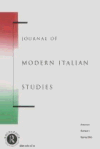
Understanding criminal mobility: the case of the Neapolitan Camorra
Italian mafias are now present and active abroad, and many national legal economies are undermined by their activities. The American government responded to this threat in 2011 by introducing an ‘executive order’ that blacklisted the Camorra's (the Neapolitan mafia) activities
in the United States. Recently, there has been a growing debate on criminal mobility and, in particular, why, when and how Italian mafiosi move out of their territory of origin and expand into new foreign territories. Recent literature suggests that Italian mafias change their behaviour
across territories and will succeed in ‘transplanting’ when there are emerging new markets. This article examines some brief case studies of camorristi in Europe to discuss these concepts of mafia mobility; and it concludes by suggesting that there is no ‘one size
fits all’ analysis and that more attention should be paid to the interdependence of territories.
Keywords: Italian mafias; Neapolitan Camorra; criminal mobility; interdependence of territories
Document Type: Research Article
Affiliations: University of Bath,
Publication date: 20 October 2014
- Editorial Board
- Information for Authors
- Subscribe to this Title
- Ingenta Connect is not responsible for the content or availability of external websites
- Access Key
- Free content
- Partial Free content
- New content
- Open access content
- Partial Open access content
- Subscribed content
- Partial Subscribed content
- Free trial content